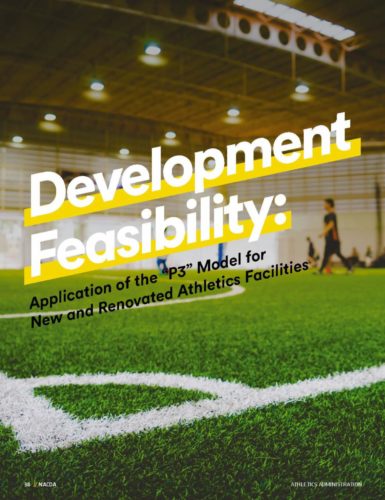 Athletic department administrators know how important athletic facilities are for positioning universities to recruit and retain the best student-athletes, students, faculty, and administrators—as well as to more effectively compete for community members’ and alumni’s entertainment and donation dollars. In the face of rising construction costs and the ever-increasing need for space, universities and athletics departments are aggressively and constantly fundraising; but fundraising success can meet its limits with donor fatigue or, in many cases, is simply problematic due to smaller donor capacities. In most cases, funding is the biggest hurdle preventing needed improvements from being made. Wesley Ellison Stewart, Boston College’s Senior Associate Athletics Director, Development, said, “Fundraising has become more and more important to the lifeblood of every athletics department. It is the delta for us to continue to grow our capital and there is never enough. We, as an industry, have to find creative ways to generate new revenue beyond philanthropy.”
Athletic department administrators know how important athletic facilities are for positioning universities to recruit and retain the best student-athletes, students, faculty, and administrators—as well as to more effectively compete for community members’ and alumni’s entertainment and donation dollars. In the face of rising construction costs and the ever-increasing need for space, universities and athletics departments are aggressively and constantly fundraising; but fundraising success can meet its limits with donor fatigue or, in many cases, is simply problematic due to smaller donor capacities. In most cases, funding is the biggest hurdle preventing needed improvements from being made. Wesley Ellison Stewart, Boston College’s Senior Associate Athletics Director, Development, said, “Fundraising has become more and more important to the lifeblood of every athletics department. It is the delta for us to continue to grow our capital and there is never enough. We, as an industry, have to find creative ways to generate new revenue beyond philanthropy.”
For many projects, there is an option that should be considered: engaging in a public-private partnership (P3). The feasibility of P3s is highly dependent on factors such as local market conditions, site, and building program, so they are not silver bullets, but in most cases the powerful results they offer are worth exploring—especially in collegiate athletics, where they are a relatively new concept. Some athletics administrators may hesitate to engage in that evaluation because, in their eyes, partnerships necessarily mean sharing time and space, which decreases the overall availability of the facility for student-athletes to the detriment to the student-athlete experience. An analysis of sample P3s, however, suggests that such compromises may in fact be avoided in a properly structured project. (Read a P3 Resource Center article of mine on this very topic).
This article examines how developing a facility through partnerships is not only be possible, but could make the difference between a feasible and an infeasible project and limit an institution’s dependence on fundraising for construction. The outcomes realized are presented through a case study of an actual initiative being developed on…